#st blasius
Text
Godshill Model Village
Situated in Godshill on the Isle of Wight is a 1:10 scale model of the village as it looked in the 1920s and 30s. Also featuring parts of Shanklin Old Village, the miniature world is hidden amongst 3,000 shrubs and conifers of a Royal Horticultural Society (RHS) garden. Godshill Model Village has entertained locals and tourists since 1952, and for a small sum of money, people can still visit the…

View On WordPress
#all saints church#apse heath#godshill#godshill model village#isle of wight#ko-fi#model village#patreon#R101 airship#RHS#Shanklin#Shanklin Chine#st blasius
0 notes
Text
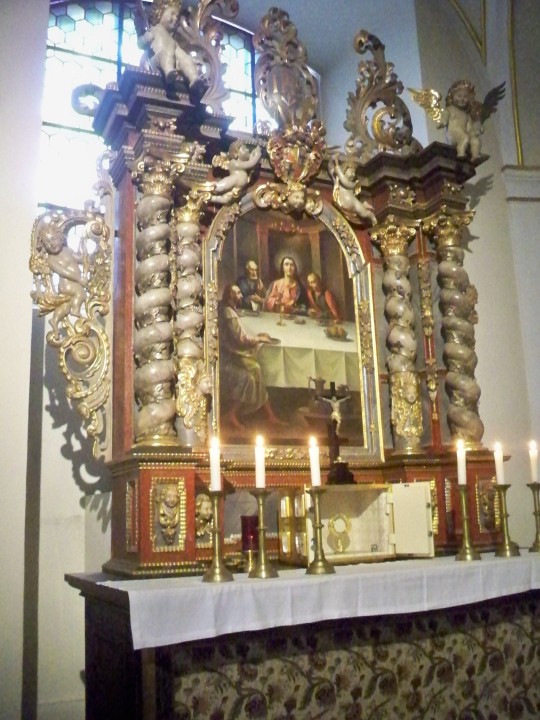
The beautyful baroque interior of St. Blasius town church in Fulda.Baroque altar in a side chapel of the church.
6 notes
·
View notes
Text
Saints&Reading: Friday, February24, 2023
february24_february11
THE PRIEST MARTYR BLAISE (BLASIOS), BISHOP OF SEBASTEIA (316)
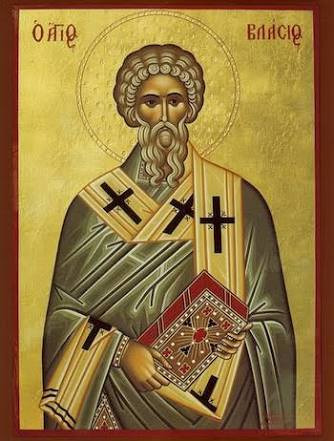
The Hieromartyr Blaise (Blasius), Bishop of Sebaste, was known for his righteous and devout life. Unanimously chosen by the people, he has been consecrated Bishop of Sebaste. This occurred during the reign of the Roman emperors Diocletian (284-305) and Licinius (307-324), fierce persecutors of Christians. Saint Blaise encouraged his flock, visited the imprisoned, and supported the martyrs.
Many hid from the persecutors by going off to desolate and solitary places. Saint Blaise hid away on Mount Argeos, where he lived in a cave. Wild beasts approached him and meekly waited until the saint finished his prayer and blessed them. The saint also healed sick animals by laying his hands upon them.
The saint's refuge was discovered by servants of the governor Agrilaus, who had come to capture wild beasts to lose on the Christian martyrs. The servants reported to their master that Christians were hiding on the mountain, and he ordered the arrest. But those sent out found there only the Bishop of Sebaste. Saint Blaise followed the soldiers to glorify God, Who had summoned him to this exploit.
Along the way, the saint healed the sick and worked other miracles. Thus, a destitute widow complained to him of her misfortune. A wolf had carried off a small pig, her only possession. The bishop smiled and said to her, “Do not weep; your pig will be returned to you...” To the astonishment of everyone, the wolf came running back and returned his prey unharmed.
Agrilaus, greeting the bishop with words of deceit, called him a companion of the gods. The saint answered the greeting, but he called the gods devils. Then they beat him and led him off to prison.
On the next day, they subjected the saint to torture again. When they led him back to the prison, seven women followed behind and gathered up the drops of blood. They arrested them and tried to compel them to worship the idols. The women pretended to consent to this and said that first, they needed to wash the idols in the waters of a lake. They took the idols and threw them in an intense part of the lake, and after this, the Christians were fiercely tortured. The saints stoically endured the torments, strengthened by the grace of God; their bodies were transformed and became white as snow. One of the women had two young sons, who implored their mother to help them attain the Kingdom of Heaven, and she entrusted them to the care of Saint Blaise. The seven holy women were beheaded.
Saint Blaise was again brought before Agrilaus, and he unflinchingly confessed his faith in Christ. The governor ordered that the martyr be thrown into a lake. Going down to the water, the saint signed himself with the Sign of the Cross, and he walked on it as though on dry land.
Addressing the pagans standing about on shore, he challenged them to come to him while calling on the help of their gods. Sixty-eight men of the governor’s retinue entered the water, and immediately drowned. The saint, heeding the angel who had appeared to him, returned to shore.
Agrilaus was in a rage over losing his finest servants, and he gave orders to behead Saint Blaise and the two sons of the woman martyr entrusted to him. Before his death, the martyr prayed for the whole world, and especially for those honoring his memory. This occurred in about the year 316.
The relics of the Hieromartyr Blaise were brought to the West during the Crusades, and portions of the relics are preserved in many of the lands of Europe [and his memory is traditionally honored there on February 3].
We pray to Saint Blaise for domestic animals' health and protection from wild beasts.
Source: Orthodox Church in America_OCA
St BENEDICT OF ANIANE ( 821_GAUL)
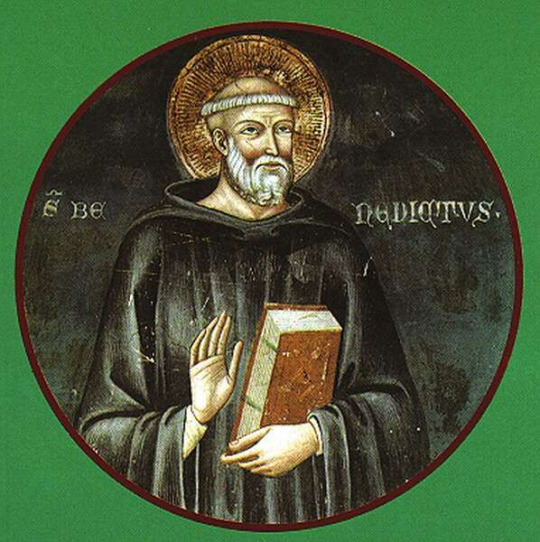
Born Witiza and called the Second Benedict, he was a Benedictine monk and monastic reformer who left a significant imprint on the religious practice of the Carolingian Empire. His feast day is February 11 or 24 , depending on the liturgical calendar. According to Ardo, Benedict's biographer, he was the son of a Visigoth, Aigulf, Count of Maguelonne (Magalonensis comes). Originally given the Gothic name Witiza, he was educated at the Frankish court of Pippin the Younger and entered the royal service as a page. He served at the court of Charlemagne, and took part in the Italian campaign of Charlemagne in 773, where he almost drowned in the Ticino near Pavia while attempting to save his brother. The experience led him to act on a resolve slowly forming in him, to renounce the world and live the monastic life. He later left the court and was received into the monastery of Saint Sequanus, the Abbey of Saint-Seine.
At Saint-Seine, Benedict was made cellarer and then elected abbot, but realizing the monks would never conform to his strict practices, he left and returned to his father's estates in Languedoc, where he built a hermitage. Around 780, he founded a monastic community based on Eastern asceticism at Aniane in Languedoc. This community needed to develop as he had intended. In 782, he founded another monastery based on Benedictine Rule at the same location. His success there gave him considerable influence, which he used to find and reform several other monasteries and eventually became the effective abbot of all the monasteries of Charlemagne's empire.
In 781, Louis the Pious became King of Aquitaine and asked Benedict to reform the monasteries in his territory. Later as Emperor, he entrusted him with coordinating practices and communication among the monasteries within his domains. He had a wide knowledge of patristic literature, and churchmen like Alcuin sought his counsel. In 814, Louis, now emperor, had Benedict found a monastery on the river Indre near the court at Aachen. The monastery was initially called the "Monastery of the Redeemer on the Indre", but came t be known as Kornelimünster Abbey.
He was the head of a council of abbots which in 817 at Aachen created a code of regulations, or "Codex regularum", which would be binding on all their houses. Benedict sought to restore the primitive strictness of the monastic observance wherever it had been relaxed or exchanged for the less exacting canonical life. Shortly after that, he compiled a "Concordia regularum". Sections of the Benedictine rule (except ix-xvi) are given in their order, with parallel passages from the other rules included in the Liber regularum, to show the agreement of principles and thus to enhance the respect due to the Benedictine. He was primarily an ecclesiastic who zealously placed his not-inconsiderable theological learning at the service of orthodoxy and the cause of Benedictine monasticism. Although these new codes fell into disuse shortly after the deaths of Benedict and his patron, Emperor Louis the Pious, they did have lasting effects on Western monasticism.
Benedict died at Kornelimünster Abbey on February 11, 821, in the monastery Louis had built for him to serve as the base for Benedict's supervisory work. He was buried the next day on February 12, hence why some list his feast day as the 11th and some the 12th.
Source: Wikipedia


ZECHARIAH 8:7-17
7 Thus says the Lord of hosts: Behold, I will save my people from the east country and from the west country; 8 and I will bring them to dwell in the midst of Jerusalem; and they shall be my people and I will be their God, in faithfulness 9 Thus says the Lord of hosts: "Let your hands be strong, you who in these days have been hearing these words from the mouth of prophets, since the day that the foundation of the house of the Lord of hosts was laid, that the temple might be built. 10 For before those days there was no wage for man or any wage for beast, neither was there any safety from the foe for him who went out or came in; for I set every man against his fellow. 11 But now I will not deal with the remnant of this people as in the former days, says the Lord of hosts. 12 For there shall be a sowing of peace; the vine shall yield its fruit, and the ground shall give its increase, and the heavens shall give their dew; and I will cause the remnant of this people to possess all these things. 13 And as you have been a byword of cursing among the nations, O house of Judah and house of Israel, so will I save you and you shall be a blessing. Fear not, but let your hands be strong." 14 For thus says the Lord of hosts: "As I purposed to do evil to you, when your fathers provoked me to wrath, and I did not relent, says the Lord of hosts, 15 so again have I purposed in these days to do good to Jerusalem and to the house of Judah; fear not. 16 These are the things that you shall do: Speak the truth to one another, render in your gates judgments that are true and make for peace, 17 do not devise evil in your hearts against one another, and love no false oath, for all these things I hate, says the Lord."
ZECHARIAH 8:19-23
19 Thus says the Lord of hosts: The fast of the fourth month, and the fast of the fifth, and the fast of the seventh, and the fast of the tenth, shall be to the house of Judah seasons of joy and gladness, and cheerful feasts; therefore love truth and peace. 20 Thus says the Lord of Hosts: 'Peoples shall yet come, Inhabitants of many cities; 21 The inhabitants of one city shall go to another, saying, "Let us continue to go and pray before the Lord, And seek the Lord of hosts. I myself will go also." 22 Yes, many peoples and strong nations Shall come to seek the Lord of hosts in Jerusalem, And to pray before the Lord.' 23 Thus says the Lord of hosts: 'In those days ten men from every language of the nations shall grasp the sleeve of a Jewish man, saying, Let us go with you, for we have heard that God is with you. '
#orthodoxy#orthodoxchristianity#eastern orthodox church#originofchristianity#spirituality#holyscriptures#bible
6 notes
·
View notes
Video
youtube
Georg Muffat (1653 - 1704) Toccata prima, (from: Apparatus musico-organisticus, 1690) performed by Peter Waldner in the church St. Blasius (Taufers im Münstertal). The organ was built by Johann Caspar Humpel in 1708/09.
7 notes
·
View notes
Text
Holidays 2.3
Holidays
American Painters Day
Artist Appreciation Day
Battle of San Lorenzo Day (Argentina)
Blessing of Throats Day (St. Blaise’s Day)
Booty Pic Day
Bowling Green Massacre Day (Kellyanne Conway Fictional Event)
Communist Party Foundation Day (Vietnam)
Day of Remembrance for Oleg the Prophet (Asatru/Slavic Pagan)
Day of the Virgin of Suyapa (Honduras)
Doggy Date Night
The Day the Music Died (according to Don McLean)
Elmo’s Day
Endangered Species Act Day
Feed the Birds Day
Four Chaplains Memorial Day
Halfway Point of Winter
Heroes' Day (Mozambique)
International Golden Retriever Day
International Lawyers Day
International Straw Free Day
John Lewis Day (Alabama)
Martyrs' Day (São Tomé and Príncipe)
Meaka Bochea Day (Cambodia)
National Cordova Ice Worm Day
National Honey Badger Day
National Missing Persons Day
National Patient Recognition Day
National Trevor Day
National Women Physicians Day
National Women’s Heart Day
Nuestra Señora de Suyapa (Festival of the Virgin of Suyapa; Honduras)
Number Day
Take a Cruise Day
Thaipoosam Cavadee (Mauritius)
Veteran’s Day (Thailand)
Veterinary Pharmacists Day
Wedding Ring Day
Food & Drink Celebrations
National Carrot Cake Day
National Carrot Day
1st Friday in February
Bubble Gum Day [1st Friday]
Give Kids a Smile Day [1st Friday]
International Clash Day [1st Friday]
National Black Nurses Day [1st Friday]
National Wear Red Day (a.k.a. Wear It Beat It) [1st Friday]
NSPCC Number Day (UK) [1st Friday]
Pi Mod Appreciation Day [1st Friday]
School Crossing Guard Appreciation Day (Florida) [1st Friday]
Working Naked Day [1st Friday]
Pliny the Younger Day [1st Friday] (Postponed to March 24 in 2023)
Independence Days
Danielland (Declared; 2015) [unrecognized]
Keep Watch (Declared; 2009) [unrecognized]
Feast Days
Aaron the Illustrious (Syriac Orthodox Church)
Ansgar (a.k.a. Anskar; Christian; Saint)
Auscharius (Christian; Saint)
Berlinda of Meerbeke (Christian; Saint)
Blaise (Christian; Saint) [Blessing of Throats]
Celsa and Nona (Christian; Saint)
Claudine Thévenet (Christian; Saint)
Dom Justo Takayama (Christian; Saint) [Japan, Philippines]
Ewok Day (Pastafarian)
Fiesta de San Blas (Protector of the Harvest; Puerto Rico)
Fukuju no mai (Jimai; Dance of the Seven Gods of Fortune; Japan)
Hadelin (Christian; Saint)
Hickety Pickety (Muppetism)
Margaret of England (Christian; Saint)
Our Lady of Suyapa (Honduras)
Pagerwesi (Festival to Sang Hyang Pramesti Guru, god of teachers and creator of the universe; Bali)
Pokémon Day (Church of the SubGenius; Saint)
Setsubun (Bean-Throwing Festival; Shinto/Japan)
Theocritus (Positivist; Saint)
Werburgh (a.k.a. Werburghe; Christian; Saint)
Lucky & Unlucky Days
Fatal Day (Pagan) [3 of 24]
Sensho (先勝 Japan) [Good luck in the morning, bad luck in the afternoon.]
Unfortunate Day (Pagan) [8 of 57]
Premieres
Air Force (Film; 1943)
Amapola, by Jimmy Dorsey and His Orchestra (Song; 1941)
Boys on the Side (Film; 1995)
Chronicle (Film; 2012)
Dead Man’s Curve (TV movie; 1978)
Earthling, by David Bowie (Album; 1997)
Fun, Fun, Fun, by The Beach Boys (Song; 1964)
Hanna (TV Series; 2019)
The IT Crowd (UK TV Series; 2006)
Jane Eyre (Film; 1944)
La Dolce Vita (Film; 1960)
Santa Clarita Diet (TV Series; 2017)
Society Dog (Disney Cartoon; 1939)
What the Bleep!?: Down the Rabbit Hole (Documentary Film; 2006)
Yield, by Pearl Jam (Album; 1998)
Today’s Name Days
Ansgar, Blasius, Oskar (Austria)
Simeon (Bulgaria)
Blaž, Tripun, Vlaho (Croatia)
Blažej (Czech Republic)
Blasius (Denmark)
Hubert, Hugo, Huko (Estonia)
Hugo, Valo (Finland)
Blaise, Nelson, Oscar (France)
Ansgar, Blasius, Michael, Oskar (Germany)
Asimakis, Asimina, Malamati, Simeon, Stamatia, Stamatis (Greece)
Balázs (Hungary)
Biagio (Italy)
Aīda, Ansgars, Ida, Laida (Latvia)
Blažiejus, Oskaras, Radvilas, Radvilė (Lithuania)
Ansgar, Asgeir (Norway)
Błażej, Hipolit, Hipolita, Laurencjusz, Maksym, Oskar, Stefan, Telimena, Uniemysł, Wawrzyniec (Poland)
Ana, Simeon (Romania)
Blažej (Slovakia)
Blas, Olivia, Óscar (Spain)
Disa, Hjördis (Sweden)
Simon (Ukraine)
Ansgar, Barclay, Baxter, Blaise,, Blase, Blasia, Blaze, Norma, Norman, Norris (USA)
Today is Also…
Day of Year: Day 34 of 2023; 331 days remaining in the year
ISO: Day 5 of week 5 of 2023
Celtic Tree Calendar: Luis (Rowan) [Day 13 of 28]
Chinese: Month 1 (Jia-Yin), Day 13 (Ren-Chen)
Chinese Year of the: Rabbit 4721(until February 10, 2024)
Hebrew: 12 Shevat 5783
Islamic: 12 Rajab II 1444
J Cal: 4 Xin; Foursday [4 of 30]
Julian: 21 January 2023
Moon: 96%: Waxing Gibbous
Positivist: 6 Homer (2nd Month) [Theocritus)
Runic Half Month: Elhaz (Elk) [Day 10 of 15]
Season: Winter (Day 45 of 90)
Zodiac: Aquarius (Day 14 of 30)
1 note
·
View note
Text
Holidays 2.3
Holidays
American Painters Day
Artist Appreciation Day
Battle of San Lorenzo Day (Argentina)
Blessing of Throats Day (St. Blaise’s Day)
Booty Pic Day
Bowling Green Massacre Day (Kellyanne Conway Fictional Event)
Communist Party Foundation Day (Vietnam)
Day of Remembrance for Oleg the Prophet (Asatru/Slavic Pagan)
Day of the Virgin of Suyapa (Honduras)
Doggy Date Night
The Day the Music Died (according to Don McLean)
Elmo’s Day
Endangered Species Act Day
Feed the Birds Day
Four Chaplains Memorial Day
Halfway Point of Winter
Heroes' Day (Mozambique)
International Golden Retriever Day
International Lawyers Day
International Straw Free Day
John Lewis Day (Alabama)
Martyrs' Day (São Tomé and Príncipe)
Meaka Bochea Day (Cambodia)
National Cordova Ice Worm Day
National Honey Badger Day
National Missing Persons Day
National Patient Recognition Day
National Trevor Day
National Women Physicians Day
National Women’s Heart Day
Nuestra Señora de Suyapa (Festival of the Virgin of Suyapa; Honduras)
Number Day
Take a Cruise Day
Thaipoosam Cavadee (Mauritius)
Veteran’s Day (Thailand)
Veterinary Pharmacists Day
Wedding Ring Day
Food & Drink Celebrations
National Carrot Cake Day
National Carrot Day
1st Friday in February
Bubble Gum Day [1st Friday]
Give Kids a Smile Day [1st Friday]
International Clash Day [1st Friday]
National Black Nurses Day [1st Friday]
National Wear Red Day (a.k.a. Wear It Beat It) [1st Friday]
NSPCC Number Day (UK) [1st Friday]
Pi Mod Appreciation Day [1st Friday]
School Crossing Guard Appreciation Day (Florida) [1st Friday]
Working Naked Day [1st Friday]
Pliny the Younger Day [1st Friday] (Postponed to March 24 in 2023)
Independence Days
Danielland (Declared; 2015) [unrecognized]
Keep Watch (Declared; 2009) [unrecognized]
Feast Days
Aaron the Illustrious (Syriac Orthodox Church)
Ansgar (a.k.a. Anskar; Christian; Saint)
Auscharius (Christian; Saint)
Berlinda of Meerbeke (Christian; Saint)
Blaise (Christian; Saint) [Blessing of Throats]
Celsa and Nona (Christian; Saint)
Claudine Thévenet (Christian; Saint)
Dom Justo Takayama (Christian; Saint) [Japan, Philippines]
Ewok Day (Pastafarian)
Fiesta de San Blas (Protector of the Harvest; Puerto Rico)
Fukuju no mai (Jimai; Dance of the Seven Gods of Fortune; Japan)
Hadelin (Christian; Saint)
Hickety Pickety (Muppetism)
Margaret of England (Christian; Saint)
Our Lady of Suyapa (Honduras)
Pagerwesi (Festival to Sang Hyang Pramesti Guru, god of teachers and creator of the universe; Bali)
Pokémon Day (Church of the SubGenius; Saint)
Setsubun (Bean-Throwing Festival; Shinto/Japan)
Theocritus (Positivist; Saint)
Werburgh (a.k.a. Werburghe; Christian; Saint)
Lucky & Unlucky Days
Fatal Day (Pagan) [3 of 24]
Sensho (先勝 Japan) [Good luck in the morning, bad luck in the afternoon.]
Unfortunate Day (Pagan) [8 of 57]
Premieres
Air Force (Film; 1943)
Amapola, by Jimmy Dorsey and His Orchestra (Song; 1941)
Boys on the Side (Film; 1995)
Chronicle (Film; 2012)
Dead Man’s Curve (TV movie; 1978)
Earthling, by David Bowie (Album; 1997)
Fun, Fun, Fun, by The Beach Boys (Song; 1964)
Hanna (TV Series; 2019)
The IT Crowd (UK TV Series; 2006)
Jane Eyre (Film; 1944)
La Dolce Vita (Film; 1960)
Santa Clarita Diet (TV Series; 2017)
Society Dog (Disney Cartoon; 1939)
What the Bleep!?: Down the Rabbit Hole (Documentary Film; 2006)
Yield, by Pearl Jam (Album; 1998)
Today’s Name Days
Ansgar, Blasius, Oskar (Austria)
Simeon (Bulgaria)
Blaž, Tripun, Vlaho (Croatia)
Blažej (Czech Republic)
Blasius (Denmark)
Hubert, Hugo, Huko (Estonia)
Hugo, Valo (Finland)
Blaise, Nelson, Oscar (France)
Ansgar, Blasius, Michael, Oskar (Germany)
Asimakis, Asimina, Malamati, Simeon, Stamatia, Stamatis (Greece)
Balázs (Hungary)
Biagio (Italy)
Aīda, Ansgars, Ida, Laida (Latvia)
Blažiejus, Oskaras, Radvilas, Radvilė (Lithuania)
Ansgar, Asgeir (Norway)
Błażej, Hipolit, Hipolita, Laurencjusz, Maksym, Oskar, Stefan, Telimena, Uniemysł, Wawrzyniec (Poland)
Ana, Simeon (Romania)
Blažej (Slovakia)
Blas, Olivia, Óscar (Spain)
Disa, Hjördis (Sweden)
Simon (Ukraine)
Ansgar, Barclay, Baxter, Blaise,, Blase, Blasia, Blaze, Norma, Norman, Norris (USA)
Today is Also…
Day of Year: Day 34 of 2023; 331 days remaining in the year
ISO: Day 5 of week 5 of 2023
Celtic Tree Calendar: Luis (Rowan) [Day 13 of 28]
Chinese: Month 1 (Jia-Yin), Day 13 (Ren-Chen)
Chinese Year of the: Rabbit 4721(until February 10, 2024)
Hebrew: 12 Shevat 5783
Islamic: 12 Rajab II 1444
J Cal: 4 Xin; Foursday [4 of 30]
Julian: 21 January 2023
Moon: 96%: Waxing Gibbous
Positivist: 6 Homer (2nd Month) [Theocritus)
Runic Half Month: Elhaz (Elk) [Day 10 of 15]
Season: Winter (Day 45 of 90)
Zodiac: Aquarius (Day 14 of 30)
0 notes
Text
What to Do and Where to Go in Croatia to Have a Perfect Holiday

Where to eat, drink, and what to do in Croatia.
It can be difficult to decide what to do in a country with so many attractions like Croatia. But if you take the time to read our tips, you will find what you are looking for. You could look at a brochure or browse travel forums. But why not go to the source and get the real deal? You can search the internet for party spots and beaches. If you are a nature lover you can simply search for hiking trails and accommodation close to a national park. But what if you want all of that? It can be difficult to know where to stay and which destination to go to to have it all. It's not a good idea to go on a family holiday only to end up at a party beach. You can search for the most famous ones such as Dubrovnik or beach Zrce. They all have their own flair, but you need to choose the one that suits your needs.
You're searching for cultural and architectural sights that are truly unique?
Diocletian’s palace in Split: This palace is not just a monument to be seen during working hours. It is also a place where people live, and it has influenced the landscape of Split. Diocletian’s palace, which was built in the 4th century AD is one of Europe's best-preserved Roman monuments. It will feel like an emperor as you walk through its streets Adventures Croatia.
- Roman amphitheater at Pula: Because the Romans inhabited almost the entire Adriatic coast, many monuments are from that period. You can take a walk inside one of the six remaining amphitheaters around the globe, which is used during summer as a stage for concerts, plays, and projections. You can see inside an arena without the lions.
- Dubrovnik : The medieval stone walls that surround the core of Dubrovnik are a must-see. The Rector's palace, Sponza, St. Blasius' church, the Franciscan monastery, and Stradun are all worth a visit. Dubrovnik is a famous Croatian postcard. If you are looking for cultural delights, Dubrovnik should be on your list.
- The medieval castles of Zagorje are If you're tired of Rome's heritage, head north to Croatia and the region around Zagorje. There are many castles and fortresses that date back to the Middle Ages. Some of them include Veliki Tabor and Trakoscan, a Romanesque castle. One of Croatia's most well-preserved monuments, the castle Trakoscan was once home to the Draskovic family. Visit Veliki Tabor to enjoy the legends of Veronika Desinicka, and the mild climate in Zagorje's green hills.
0 notes
Text
Zwei neue Mehrfamilienhäuser in Leinheim sind nun doch erlaubt
Zwei neue Mehrfamilienhäuser in Leinheim sind nun doch erlaubt
Leinheim: „…Zu massiv, zu wuchtig, zu überdimensioniert, extrem vollgebaut – so lautete die Hauptkritik von mehreren Mitgliedern des Günzburger Bauausschusses, als es um ein Bauvorhaben in Leinheim ging. Dort sollten in der St.-Blasius-Straße zwei Mehrfamilienhäuser mit jeweils fünf Wohnungen entstehen, doch der Bauausschuss störte sich an den Planungen. Mit denkbar knappen 7:7 Stimmen wurde das…

View On WordPress
#Bauanträge#Bauausschuss#Bauvorhaben#Bebaubarkeit#dreigeschossig#Grundstück#Leinheim#Mehrfamilienhäuser#Neubau#überdimensioniert#Wohnungen#wuchitg
0 notes
Photo
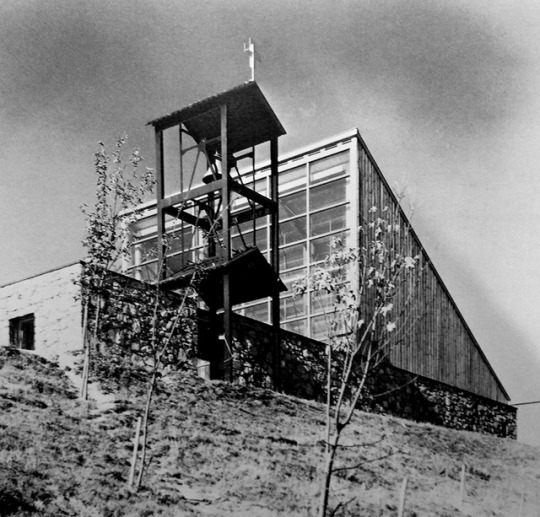

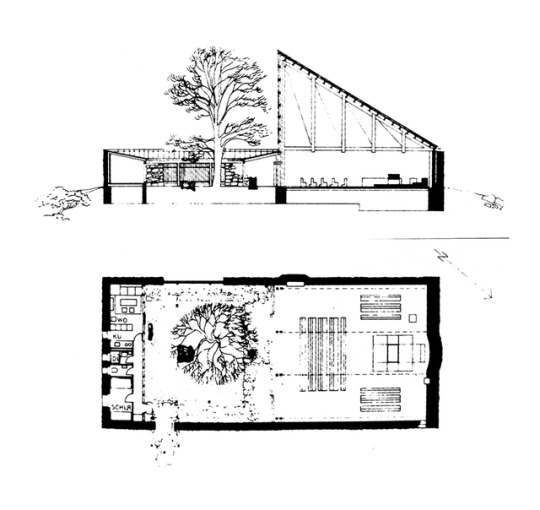
'Bergkirche St. Johann im Gebirg', church
Reit im Winkl - Seegatterl, Bavaria, Germany; 1963-66
Josef Wiedemann (architect), Blasius Gerg (sculptor)
see map | more information 1, 2 | pictures 1, 2, 3
via "Josef Wiedemann Bauten und Projekte"; Meitinger, Otto; TUM (1981)
#architecture#arquitectura#architektur#architettura#church#kirche#igreja#st johann im gebirg#josef wiedemann#blasius gerg#reit#reit im winkl#seegatterl#bavaria#bayern#deutschland#germany#german architecture
86 notes
·
View notes
Text
St. Blasius day 3. February
Superstition:
If the wind is calm on this day, there will be few snakes this year.
If there are strong winds or storms there will be snakes, toads and pests in plenty. Other animals will also awaken early from hibernation.
Stay from using tools that turn on this day, like a spinning wheel, as it will curse your pets with illness.
Two white candles, blessed at Candlemass, can be held in a cross over the throat while saying a blessing to remove pain in this area.
#pagan#witchythings#witchcraft#witchblr#norse calendar#witch calendar#my calendar#st. blasius#3. February#3.02#candlemagick#weather spell#spellcraft#candlemass#imbolc#weather divination#divination#aeromancy
4 notes
·
View notes
Text
Russian Fairy Tales Test Prep: Pagan Deities
The best known roster of pagan deities is that of the six whose statues Prince Vladimir erected upon assuming sole rule of Kiev. According to the Primary Chronicle for the year 980, he “placed idols on a hill, outside the palace yard, a wooden Perun with a silver head and a golden mustache, and Khors and Dazhbog and Stribog and Simargl and Mokosh.” Missing from this list is Volos/Veles, the god of cattle (skotnii bog) and commerce, whose veneration in ancient Rus’ is widely attested, and by whose name (along with that of Perun) ancient Russians ratified oaths.

A. Perun/Bog
1. equivalent to: Lithuanian Perkunas, Latvian Perkons, Albanian Perendi, Roman Jupiter, Greek Zeus, Hittite Teshub, Norse Thor/Donar, Celtic Taranis.
2. primary sources: Nestor’s Chronicle, mid-6th century Procopius, 10th-century Varangian treaties
3. primary story: a creation myth, in which he battles Veles, the Slavic god of the underworld, for the protection of his wife (Mokosh, goddess of summer) and the freedom of atmospheric water, as well as for the control of the universe.
4. dvoeverie: After Christianization in the 11th century CE, Perun's cult became associated with St. Elias (Elijah), also known as the Holy Prophet Ilie (or Ilija Muromets or Ilja Gromovik), who is said to have ridden madly with a chariot of fire across the sky, and punished his enemies with lightning bolts.
In Slavic mythology: Perun was the supreme god of the pre-Christian Slavic pantheon, although there is evidence that he supplanted Svarog (the god of the sun) as the leader at some point in history. Perun was a pagan warrior of heaven and patron protector of warriors. As the liberator of atmospheric water (through his creation tale battle with the dragon Veles), he was worshipped as a god of agriculture, and bulls and a few humans were sacrificed to him. In 988, the leader of the Kievan Rus' Vladimir I pulled down Perun's statue near Kyiv (Ukraine) and it was cast into the waters of the Dneiper River. As recently as 1950, people would cast gold coins in the Dneiper to honor Perun.
Appearance & Reputation: Perun is portrayed as a vigorous, red-bearded man with an imposing stature, with silver hair and a golden mustache. He carries a hammer, a war ax, and/or a bow with which he shoots bolts of lightning. He is associated with oxen and represented by a sacred tree—a mighty oak. He is sometimes illustrated as riding through the sky in a chariot drawn by a goat. In illustrations of his primary myth, he is sometimes pictured as an eagle sitting in the top branches of the tree, with his enemy and battle rival Veles the dragon curled around its roots.
Perun is associated with Thursday—the Slavic word for Thursday "Perendan" means "Perun's Day"—and his festival date was June 21.
Reports: The earliest reference to Perun is in the works of the Byzantine scholar Procopius (500–565 CE), who noted that the Slavs worshipped the "Maker of Lightning" as the lord over everything and the god to whom cattle and other victims were sacrificed.
Perun appears in several surviving Varangian (Rus) treaties beginning in 907 CE. In 945, a treaty between the Rus' leader Prince Igor (consort of Princess Olga) and the Byzantine emperor Constantine VII included a reference to Igor's men (the unbaptized ones) laying down their weapons, shields, and gold ornaments and taking an oath at a statue of Perun—the baptized ones worshipped at the nearby church of St. Elias. The Chronicle of Novgorod (compiled 1016–1471) reports that when the Perun shrine in that city was attacked, there was a serious uprising of the people, all suggesting that the myth had some long-term substance.
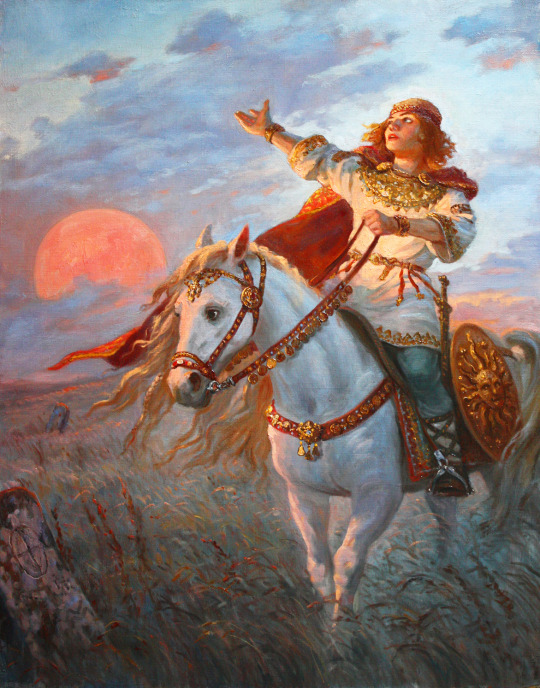
B. Kors/Xors/Chors
- most frequently mentioned Slavic god, after Perun
- dvoeverie: appears in the apocryphal work Sermon and Apocalypse of the Holy Apostles, which mentions Perun and Khors as old men; Khors is said to live in Cyprus. Khors also appears in the apocryphal text Conversation of the Three Saints, a text which combines Slavic + Christian + Bogomil traditions. In it, he is referred to as “an angel of thunder” and it is said that he is Jewish.
- his functions are uncertain and there are multiple interpretations of his name.
1. Sun God hypothesis: associated with Dazhbog; in The Tale of Igor’s Campaign, Prince Vseslav, who “came to Tmutarakani before the cocks" and "Khors ran his way", traveled from west to east and thus reached the castle before the cocks crowed, and in this way "overtook" the Sun; his name means “rays.”
2. Moon God hypothesis: Prince Vseslav was called “wolf” and his journey takes place at night when the sun is absent from the sky; his name does mean “rays” but they’re the moon’s rays and not the sun’s rays.
3. Fertility God/Vegetation hypothesis: link between Thracian & early Slavic cultures indicates Kors is more of a Dionysus-type figure, who dies and is risen; like Dionysus, Dazhbog (who Kors is often linked to) has a double nature (Eastern Slavs assign him solar qualities, while Southern Slavs assign him chthonic qualities).
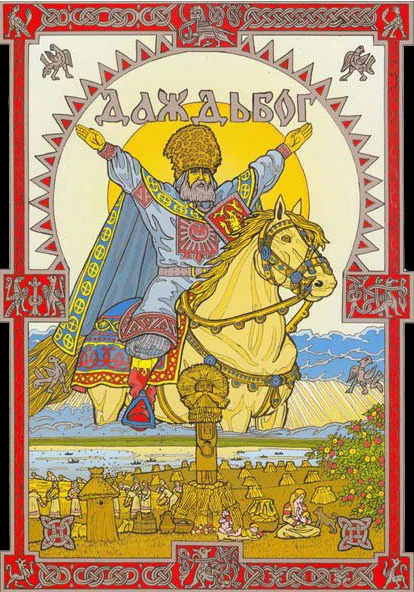
C. Dazhbog
1. equivalent to: Khors (Russian/Iranian), Mithra (Persian), Helios (Greek), Lucifer (Christian)
2. primary sources: John Malalas, The Song of Igor’s Campaign
3. family: Son of Svarog, brother of fire god Svarozhich, husband of Mesyats (the moon), father of the Zoryi and Zvezdy
4. primary myth: He resided in the east, in a land of everlasting summer and plenty, in a palace made of gold. The morning and evening auroras, known collectively as Zorya, were his daughters. In the morning, Zorya opened the palace gates to allow Dazbog to leave the palace and begin his daily journey across the sky; in the evening, Zorya closed the gates after the sun returned in the evening.
5. dvoeverie: There was a belief that each winter he would enter people's homes and gift gold to those who had been good. That belief passed into Christianity, especially in Serbia, and this visitor was called Položajnik. During Christianisation, his cult was exchanged with the cult of Saint Sava, while Dažbog became lame Daba - the most powerful demon in Hell. Reasons why he was demonized are various, possibly because his cult was the strongest in Serbia or because he was considered also as the god of Nav, the Slavic underworld and world of the dead.
In Slavic mythology: Dazbog was the Slavic sun god, a role that is common to many Indo-European people, and there is ample evidence that there was a sun cult in the pre-Christian tribes of central Europe. His name means "day god" or "giving god," to different scholars—"Bog" is generally accepted to mean "god," but Daz means either "day" or "giving."
His totem animal was a wolf, therefore wolves were sacred animals and killing them was considered a great sin. Wolves were considered to be messengers of Dazhbog, while he himself could shift into a white wolf.
According to one myth, Svarog became tired of reigning over the universe and passed on his power to his sons, Dazhbog and Svarogich.
Appearance & Reputation: Dazbog is said to ride across the sky in a golden chariot drawn by fire-breathing horses who are white, gold, silver, or diamonds. In some tales, the horses are beautiful and white with golden wings, and sunlight comes from the solar fire shield Dazbog always carries with him. At night, Dazbog wanders the sky from east to west, crossing the great ocean with a boat pulled by geese, wild ducks, and swans.
In some tales, Dazbog starts out in the morning as a young, strong man but by the evening he is a red-faced, bloated elderly gentleman; he is reborn every morning. He represents fertility, male power, and in "The Song of Igor's Campaign" he is mentioned as the grandfather of the Slavs.
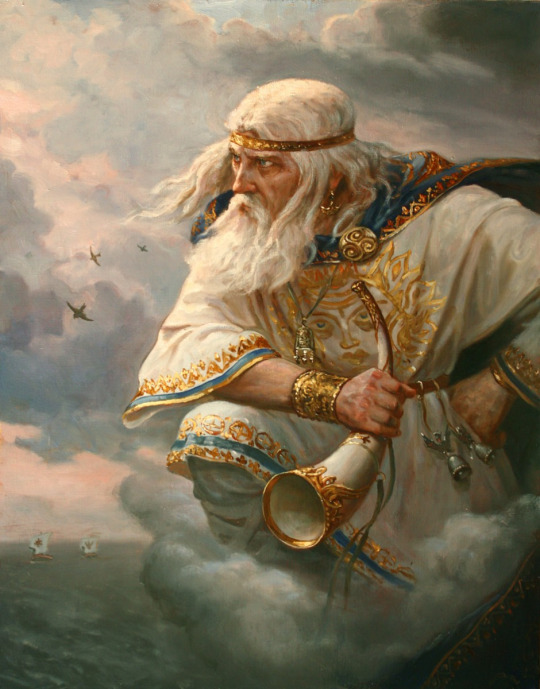
4. Stribog
Very little is known about him, although he was clearly very important to early Slavic peoples. In the epic ”Slovo o polku Igorove “ it is said that the winds, the grandsons of Stribog, blow from the sea. This leads to conclusion that Stribog is imagined as an old person, since he has grandsons. The grandsons were the winds from all directions.
Eagle was the animal consecrated to Stribog. Plants consecrated to Stribog were hawthorn and oak. When pledges were made, Stribog was often warrantor. Festivities in Stribog’s honor were organized in the summer as well as in the winter. They were probably organized in the summer in order to invocate winds and rain, while in the winter they were organized in order to appease him. In the period of Christianization Stribog’s characteristics were overtaken by St. Bartholomew and Stevan vetroviti (windy).
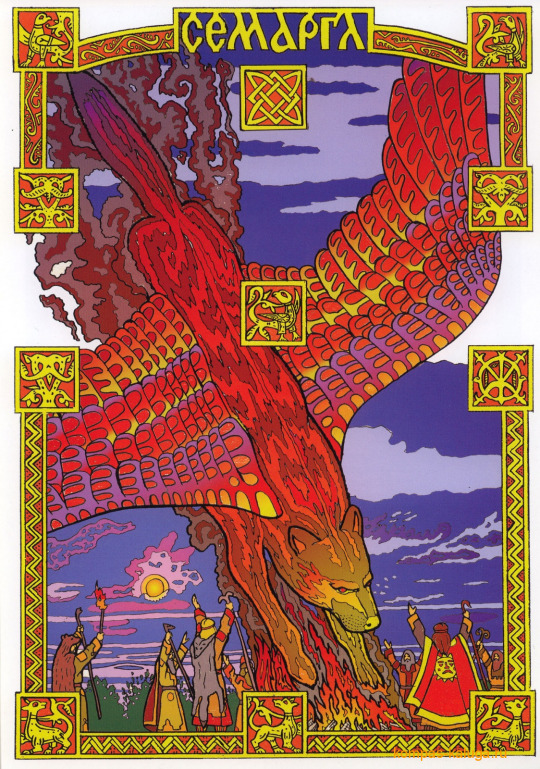
5. Simargl/Semargl
- may be equivalent to Simurgh in Persian mythology, who is portrayed similarly (winged lion and/or dog). He can also take human form.
- God of physical fire (as opposed to celestial fire; that’s Svarog)
- He is said to be the husband of Kupalnica (or Kupalnitsa), goddess of night, from whom he got two children: Kupalo and Kostroma.
Zorya, solar goddesses who are servants or daughters of the deity Dazhbog, keep Simargl chained to the star Polaris in the constellation Ursa Minor. Should he break free and destroy this constellation, it will cause the world to end.
Why would he be worshipped in Rus’, you ask? A couple of possible answers:
a. Eastern Slavs borrowed Simargl from Sarmatian-Alanian people and worshiped him.
b. Eastern Slavs never worshiped Simargl. Just at that time, a significant number of Kiev residents were of Khazar and Sarmatian-Alanian origin. Vladimir included their deity in the pantheon to get their support.

6. Volos/Veles (also Vlas, Weles Vlasii, St. Blaise, or Blasius)
1. equivalent to: Velinas (Baltic), Varuna (Vedic), Hermes (Greek), Odin (Norse)
2. primary sources: The Tale of Igor’s Campaign, old Russian chronicles
3. primary myth: a creation myth, in which Veles abducts Mokosh (the Goddess of Summer and consort of Perun, God of Thunder). Perun and his enemy battle for the universe under a huge oak, Perun's holy tree, similar to both Greek and Norse (Yggdrasil) mythologies. The battle is won by Perun, and afterward, the waters of the world are set free and flowing.
4. dvoeverie: Velia remains a feast of the dead in old Lithuanian, celebrating the border between the world of the living and the world of the dead, with Veles operating as a role of guiding souls to the underworld. The battle between Perun (Ilija Muromets or St. Elias) and Veles (Selevkiy) is found in many different forms, but in later stories, instead of gods, they are complementary figures separated from one another by a furrow plowed by Christ, who converts them. Veles is also likely represented by St. Vlasii, depicted in Russian iconography as surrounded by sheep, cows, and goats.
In Slavic mythology: A second creation myth associated with Veles is the formation of the boundary between the underworld and the human world, a result of a treaty forged between Veles and a shepherd/magician.
In the treaty, the unnamed shepherd pledges to sacrifice his best cow to Veles and keep many prohibitions. Then he divides the human world from the wild underworld led by Veles, which is either a furrow plowed by Veles himself or a groove across the road carved by the shepherd with a knife which the evil powers cannot cross.
Veles is associated with a wide variety of powers and protectors: he is associated with poetry and wisdom, the lord of the waters (oceans, seas, ships, and whirlpools). He is both the hunter and protector of cattle and the lord of the underworld, a reflection of the Indo-European concept of the netherworld as a pasture. He is also related to an ancient Slavic cult of the deceased soul; the ancient Lithuanian term "welis" means "dead" and "welci" means "dead souls."
Appearance & Reputation: Veles is generally portrayed as a bald human man, sometimes with bull horns on his head. In the epic creation battle between Velos and Perun, however, Veles is a serpent or dragon lying in a nest of black wool or on a black fleece beneath the World Tree; some scholars have suggested he was a shape-shifter. In addition to domestic horses, cows, goats, and sheep, Veles is associated with wolves, reptiles, and black birds (ravens and crows).
Reports: The earliest reference to Veles is in the Rus-Byzantine Treaty of 971, in which the signers must swear by Veles' name. Violators of the treaty are warned of a menacing punishment: they will be killed by their own weapons and become "yellow as gold," which some scholars have interpreted as "cursed with a disease." If so, that would imply a connection to the Vedic god Varuna, also a cattle god who could send diseases to punish miscreants.

7. Mokosh
1. loosely comparable to: Gaia, Hera (Greek), Juno (Roman), Astarte (Semitic)
2. epithets: Goddess Who Spins Wool, Mother Moist Earth, Flax Woman
3. primary sources: Nestor Chronicle (a.k.a. Primary Chronicle), Christian-recorded Slavic tales
4. dvoeverie: With the coming of Christianity into the Slavic countries in the 11th century CE, Mokosh was converted to a saint, St. Paraskeva Pyanitsa (or possibly the Virgin Mary), who is sometimes defined as the personification of the day of Christ's crucifixion, and others a Christian martyr. Described as tall and thin with loose hair, St. Paraskeva Pyanitsa is known as "l'nianisa" (flax woman), connecting her to spinning. She is the patroness of merchants and traders and marriage, and she defends her followers from a range of diseases.
In Slavic mythology: The origins of Mokosh as mother earth may date to pre-Indo-European times (Cuceteni or Tripolye culture, 6th–5th millennia BCE) when a near-global woman-centered religion is thought to have been in place. Some scholars suggest she may be a version of Finno-Ugric sun goddess Jumala.
Mokosh, sometimes transliterated as Mokoš and meaning "Friday," is Moist Mother Earth and thus the most important (or sometimes only) goddess in the religion. As a creator, she is said to have been discovered sleeping in a cave by a flowering spring by the spring god Jarilo, with whom she created the fruits of the earth. She is also the protector of spinning, tending sheep, and wool, patron of merchants and fishermen, who protects cattle from plague and people from drought, disease, drowning, and unclean spirits.
Although the Great Goddess has a variety of consorts, both human and animal, in her role as a primary Slavic goddess, Mokosh is the moist earth goddess and is set against (and married to) Perun as the dry sky god. Some Slavic peasants felt it was wrong to spit on the earth or beat it. During the Spring, practitioners considered the earth pregnant: before March 25 ("Lady Day"), they would neither construct a building or a fence, drive a stake into the ground or sow seed. When peasant women gathered herbs they first lay prone and prayed to Mother Earth to bless any medicinal herbs.
Appearance & Reputation: Surviving images of Mokosh are rare—although there were stone monuments to her beginning at least as long ago as the 7th century. A wooden cult figure in a wooded area in the Czech Republic is said to be a figure of her. Historical references say she had a large head and long arms, a reference to her connection with spiders and spinning. Symbols associated with her include spindles and cloth, the rhombus (a nearly global reference to women's genitals for at least 20,000 years), and the Sacred Tree or Pillar.There are many goddesses in the various Indo-European pantheons who reference spiders and spinning. Historian Mary Kilbourne Matossian has pointed out that the Latin word for tissue "textere" means "to weave," and in several derivative languages such as Old French, "tissue" means "something woven." The act of spinning, suggests Matossian, is to create body tissue. The umbilical cord is the thread of life, transmitting moisture from the mother to the infant, twisted and coiled like the thread around a spindle. The final cloth of life is represented by the shroud or "winding sheet," wrapped around a corpse in a spiral, as thread loops around a spindle.
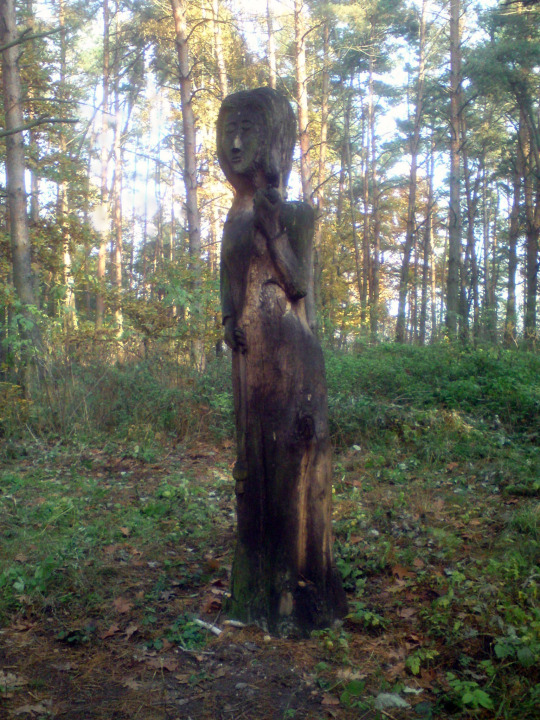
Our brief survey of agrarian holidays indicates that the peasant’s central concern is fertility and that special rites in the cemetery and/or rites involving a symbolic death & resurrection are a major component in these celebrations.
Belief in the absolute sanctity of “Mother Damp Earth” (Mat’syra zemlia) has been central to folk belief throughout the centuries. In remote areas, old people observed a ritual of asking the earth’s forgiveness prior to death into the 20th century. A number of scholars have maintained that peasants transferred attributes of earth worship to their particular veneration of Mary as “Mother of God.”
Fedotov: “At every step in studying Russian popular religion, one meets the constant longing for a great divine female power, be it embodied in the image of Mary or someone else. Is it too daring to hypothesize, on the basis of this religious propensity, the scattered elements of the cult of a Great Goddess who once...reigned upon the immense Russian plains?”
#Russian fairy tales#study blog#my notes#Slavic deities#slavic mythology#Russian paganism#russian folk belief
120 notes
·
View notes
Photo
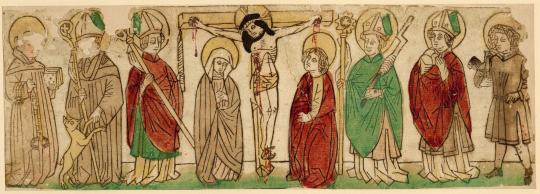
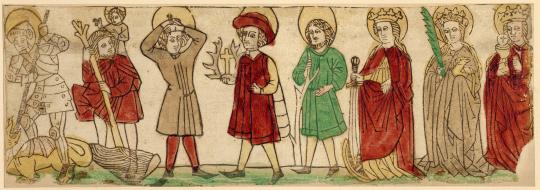
Unknwon Artist
The fourteen auxiliary saints
First sheet: in the centre is Christ on the cross with the Virgin and St. John; to the left stand St. Leonard, St. Giles, St. Blasius; to the right are St. Erasmus, St. Nicholas and St. Vitus
Second sheet: from left to right stand the following saints with their attributes: St. George, St. Christopher, St. Pantaleon, St. Eustace, St. Acacius, St. Catherine, St. Margaret, St. Barbara
Woodcut with hand-colouring, 11.8 x 13.4 cm, 1460-70
#auxiliary saints#saint#leonard#giles#blasius#erasmus#nicholas#vitus#george#christopher#pantaleon#eustace#acacius#catherine#margaret#barbara#martyr#15th century
47 notes
·
View notes
Text
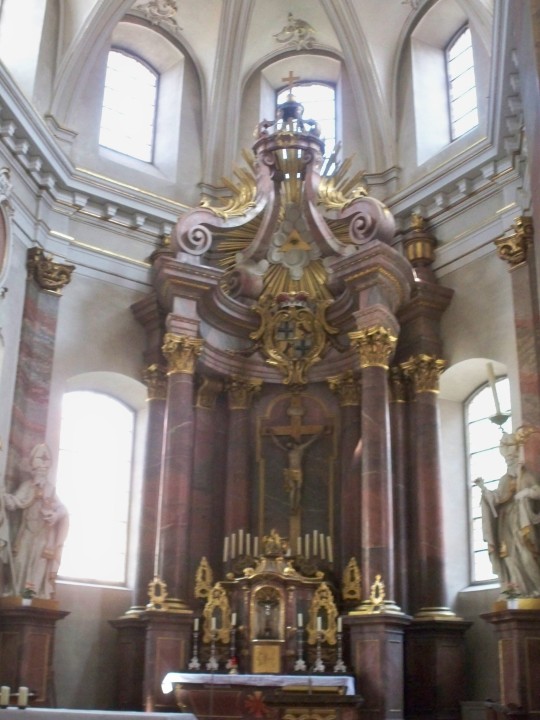
The beautyful baroque interior of St. Blasius town church in Fulda.
The baroque main altar.
0 notes
Text

🐺Veles🦉
Aka. Volos, Weles, Vlasii
He is associated with St. Nicholas and St. Blaise/Blasius/Vlas
Veles is compared to Odin, Loki, Hermes
🐂Slavic god of the underworld, livestock, water, earth, music, magic, farmers, merchants, traders, poetry
🐲His symbols are willow, owls, wolves, bears, cattle, snakes, dragons, black birds
Veles oldest known mention is the Rus-Byzantine treaty of 971 where the signers swear by Veles name.
He is the rival of the god Perun whom he battles in the form of a dragon. Veles is said to have kidnapped Perun's wife, son, or cattle. Perun retaliates with lightning, causing Veles to run. He tries to hide by taking various forms. Veles is eventually caught and killed, whomever is stolen is freed in the form of rain. Veles then sheds his skin and is reborn and the cycle begins again.
🐍Sources
Wikipedia Veles(god)
Thoughtco.com/veles
Does anyone work with Veles? What do you do to honor him?
21 notes
·
View notes
Text
youtube
Josef Pembaur (1848-1923) - Cello Concerto in B minor, Op. 86 (1910)
I. Praeludium: Allegro non troppo, ma patetico II. Romanze: Adagio poco mosso 8:29 III. Finale: Allegro fantastico 18:40
Tim Ströble, cello
Orchester der Akademie St. Blasius Karlheinz Seissl, conductor
1 note
·
View note
Text
Jan Blažej Santini Aichel (3 February 1677 – 7 December 1723) was a Czech architect of Italian descent, whose major works represent the unique Baroque Gothic style - the special combination of the Baroque and Gothic styles.He was born on the day of Saint Blaise as the oldest son to a respectable family of a Prague stonemasons Santini Aichel (his grandfather Antonio Aichel moved from Italy to Prague in the 1630s) and was baptized in the St. Vitus Cathedral as Johann Blasius Aichel. He was born with a physical disability – paralysis of a half of his body. This prevented him from a successful follow-up to his father's career. He only served his time of apprenticeship (as did his brother Franz), but he also studied painting from the imperial and royal painter Christian Schröder.
2 notes
·
View notes